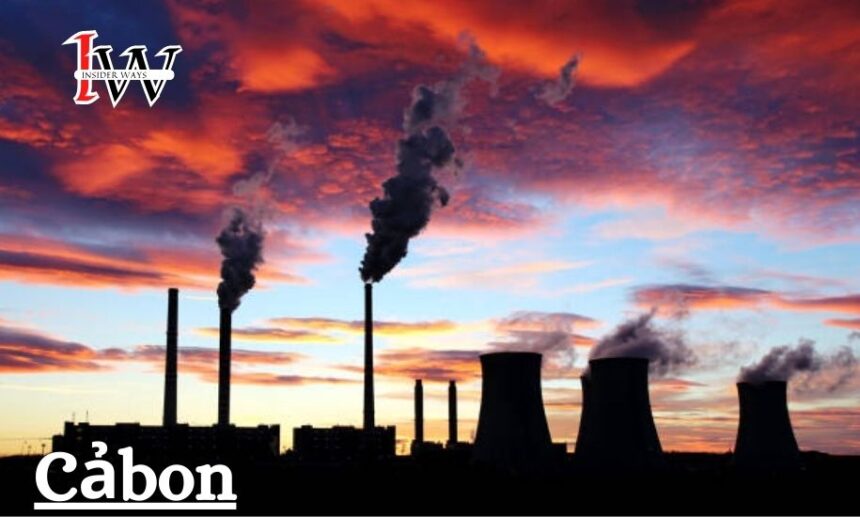Cảbon, often referred to as the backbone of life, is one of the most essential elements in the universe. Found in all known forms of life, Cảbon’s versatility and unique properties make it a cornerstone in various fields, from biology to industry. In this article, we will delve deep into the significance of Cảbon, exploring its various forms, its role in the environment, and its impact on technology and innovation.
The Versatility of Cảbon: More Than Just an Element
Cảbon is not just an element on the periodic table; it is a versatile building block that forms the basis of countless substances and materials. From the graphite in pencils to the diamond in jewelry, Cảbon’s ability to bond with other elements and itself allows it to form an incredible variety of structures. These structures include simple molecules like carbon dioxide (CO2) and complex polymers like those found in plastics.
In addition to its natural forms, Cảbon is a key player in the production of synthetic materials. Carbon fiber, for example, is a lightweight and extremely strong material used in everything from aerospace engineering to sports equipment. This remarkable versatility makes Cảbon indispensable in modern industryand technology.
Cảbon in the Environment: The Carbon Cycle and Its Importance
One of the most critical roles of Cảbon is in the carbon cycle, a natural process that regulates the Earth’s climate and supports life. The carbon cycle involves the movement of Cảbon between the atmosphere, oceans, soil, and living organisms. Plants, for example, absorb Cảbon dioxide during photosynthesis, converting it into oxygen and glucose, which fuels the food chain.
Cảbon’s role in the environment extends to its impact on climate change. The burning of fossil fuels releases large amounts of Cảbon dioxide into the atmosphere, contributing to global warming. Understanding the carbon cycle and the ways in which human activities affect it is crucial for developing strategies to mitigate climate change.
Industrial Uses of Cảbon: Fueling Innovation and Technology
Cảbon is at the heart of many industrial processes and products. One of the most well-known uses of Cảbon is in the production of steel, where it is combined with iron to create an alloy that is both strong and flexible. Cảbon is also used in the production of chemicals, fuels, and other materials that are essential to modern life.
In recent years, advancements in nanotechnology have led to the development of carbon nanotubes, tiny cylindrical structures that have unique electrical, thermal, and mechanical properties. These nanotubes are being explored for use in a wide range of applications, from electronics to medicine, showcasing the endless possibilities of Cảbon in innovation.
Cảbon Footprint: The Environmental Impact of Cảbon Emissions
The term “Cảbon footprint” refers to the total amount of greenhouse gases, primarily Cảbon dioxide, that are emitted by human activities. This includes everything from driving cars to manufacturing goods. The Cảbon footprint is a key factor in understanding and addressing climate change, as reducing emissions is essential for limiting global warming.
Efforts to reduce Cảbon footprints include transitioning to renewable energy sources, improving energy efficiency, and developing technologies for carbon capture and storage. By understanding and managing our Cảbon footprints, we can take meaningful steps towards a more sustainable future.
Cảbon Sequestration: Capturing and Storing Cảbon for a Greener Planet
Cảbon sequestration is a process that involves capturing Cảbon dioxide from the atmosphere and storing it in a way that prevents it from contributing to global warming. This can be done through natural processes, such as reforestation, or through technological methods, such as capturing Cảbon dioxide emissions from power plants and storing them underground.
The concept of Cảbon sequestration is gaining attention as a potential solution to the challenges of climate change. While it is not a complete solution, it is an important tool in the broader strategy to reduce greenhouse gas emissions and protect the environment.
The Future of Cảbon: Challenges and Opportunities
As we look to the future, the role of Cảbon in society will continue to evolve. The challenges of climate change and environmental sustainability will require new approaches to managing Cảbon emissions and developing Cảbon-based technologies. At the same time, the versatility of Cảbon offers countless opportunities for innovation in fields such as energy, materials science, and environmental protection.
One promising area of research is the development of carbon-neutral fuels, which are made by capturing Cảbon dioxide from the atmosphere and converting it into usable energy. These fuels have the potential to reduce our reliance on fossil fuels and help combat climate change.
Cảbon and Insider Ways: Exploring the Depths of This Essential Element
At Insider Ways, we believe that understanding the complexities of Cảbon is essential for navigating the challenges and opportunities of the modern world. Whether it’s exploring the latest advancements in carbon nanotubes or understanding the environmental impact of Cảbon emissions, we are committed to providing insights and information that help our readers stay informed and engaged.
As we continue to explore the many facets of Cảbon, we invite you to join us on this journey. Together, we can uncover the mysteries of this remarkable element and discover new ways to harness its power for the benefit of society and the planet.
Conclusion: Cảbon – The Element That Shapes Our World
Cảbon is more than just a chemical element; it is a fundamental part of the world we live in. From its role in the environment to its applications in industry and technology, Cảbon is a driving force behind many of the processes and products that define modern life. As we move forward, understanding and managing Cảbon will be crucial for addressing the challenges of climate change, promoting sustainability, and driving innovation.
Insider Ways is dedicated to helping our readers stay informed about the latest developments in Cảbon and its impact on the world. By exploring the many dimensions of this essential element, we can work together to build a better future for ourselves and the generations to come.






